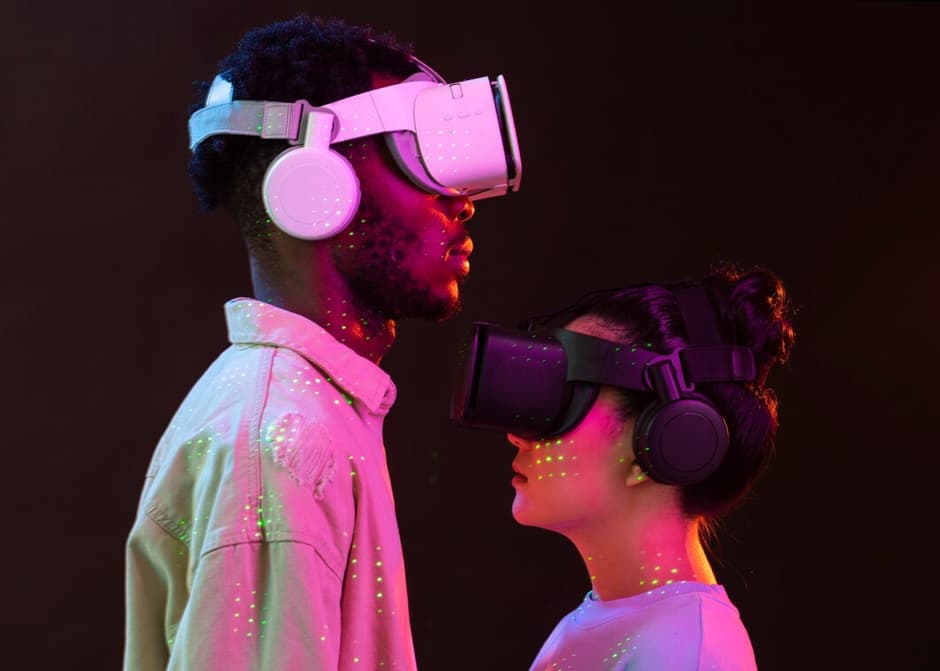Virtual Reality (VR) and Augmented Reality (AR) are revolutionizing the world of gaming, particularly in the realm of multiplayer experiences. As these technologies evolve, they are transforming how players interact, collaborate, and compete in digital spaces. The integration of VR and AR into multiplayer games has paved the way for a new era where immersion and interactivity are the cornerstones of gaming.
Immersive Worlds and Enhanced Player Interaction
One of the most promising aspects of VR and AR in multiplayer gaming is the creation of immersive worlds that enable players to experience a heightened sense of presence. In VR multiplayer games, players can move freely in a three-dimensional space, interacting with objects and other players in ways that were previously unimaginable. This level of immersion allows for more dynamic gameplay, where players feel as though they are part of the game environment rather than just controlling a character on a screen.
AR, on the other hand, enhances real-world environments by overlaying digital elements, allowing players to engage with game elements through their smartphones or AR glasses. This blend of physical and digital realms has given rise to games that encourage outdoor exploration and social interaction in real-world settings. Pokémon Go is a prime example of how AR can bring multiplayer gaming to everyday life, creating a shared experience that extends beyond the screen.
For those who enjoy traditional gaming as well, exploring game reviews like https://grafortuna.com.ua/free-slots/the-dog-house-megaways/ can provide insight into how different game mechanics work. Understanding these mechanics can be particularly valuable when transitioning into the world of VR and AR multiplayer games, where gameplay complexity often increases due to new interaction possibilities.
Social Dynamics and Community Building in Virtual Worlds
VR and AR have also transformed the social dynamics of multiplayer games. In virtual reality, social interaction takes on a new dimension, with players able to communicate through gestures, voice, and body language. This brings a sense of realism that traditional online chat or voice communication cannot match. It allows players to feel as though they are sharing a physical space, making social interactions more organic and meaningful.
Games like VRChat exemplify how VR is being used to create expansive virtual communities where users from around the world can come together, socialize, and even host events. These virtual spaces allow for creativity and self-expression, as users can design their avatars and participate in activities that range from virtual concerts to role-playing adventures. The immersive nature of these platforms creates a sense of community that extends beyond the game itself.
AR has also contributed to social gaming experiences by enabling shared activities in real-world environments. Location-based AR games encourage players to meet up in physical spaces, creating opportunities for community-building. As AR technology continues to advance, the potential for more sophisticated multiplayer interactions grows, offering the possibility of large-scale augmented reality events and games that blend seamlessly with everyday life.
The Technical Challenges and Future Potential of VR and AR in Gaming

Despite the exciting possibilities of VR and AR in multiplayer games, several technical challenges remain. Issues like latency, hardware limitations, and the need for seamless connectivity can hinder the overall experience. In VR, maintaining a stable frame rate is crucial for preventing motion sickness, while AR games must ensure accurate tracking of real-world environments to avoid breaking immersion.
Moreover, VR hardware, such as headsets and controllers, can be cost-prohibitive for some players, limiting the accessibility of these experiences. AR, while more accessible through smartphones, still faces challenges in terms of user interface design and battery consumption. However, as technology progresses, we can expect these barriers to decrease, making VR and AR more mainstream in the gaming community.
One of the promising aspects of AR’s future lies in its potential to be combined with other forms of digital entertainment. For instance, AR-based games can integrate elements from popular online slots, such as the mechanics of games like https://grafortuna.com.ua/free-slots/gates-of-olympus/. This type of integration could create engaging, interactive experiences that blend the thrill of slot games with the immersive qualities of AR environments.
Conclusion: A New Era for Multiplayer Gaming
As VR and AR continue to develop, the future of multiplayer games is set to become even more immersive and interactive. The blend of physical and digital spaces allows for unique gaming experiences that challenge traditional gameplay mechanics and open up new possibilities for social interaction and community-building. With advancements in hardware, software, and network infrastructure, we can expect VR and AR to become integral to the multiplayer gaming landscape, offering experiences that are richer and more engaging than ever before.
In this evolving landscape, players have the opportunity to explore new worlds, whether they are navigating a virtual reality battlefield or participating in an augmented reality scavenger hunt. As technology continues to advance, the line between the virtual and real worlds will blur even further, making multiplayer games an even more integral part of our digital lives.